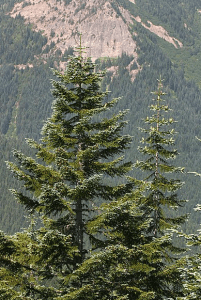Noble Fir / Spring / Summer / Autumn / Winter / Edible
Common Name
Noble Fir
Botanical Name
Abies procera
Scientific Classification
Kingdom: Plantae
Order: Pinales
Family: Pinaceae
Physical Characteristics for Noble Fir
A large tree growing up to 45-90 m in height with a conical crown.
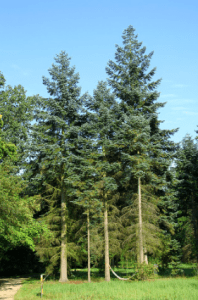
Leaves
Upswept bluish-grey needles at right angles to the twig, long (25 mm).
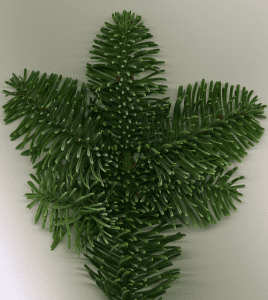
Flowers
The flowers appear in April. The reddish male flowers are found underneath the leaves with the greenish-yellow female flowers, (cones), upright on the stems.
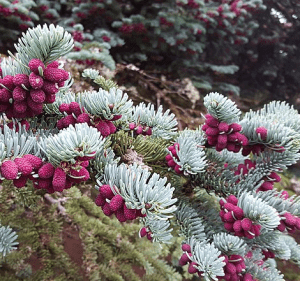
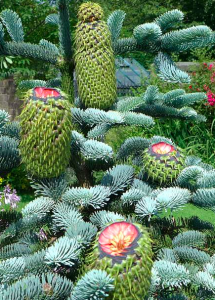
Seeds
The seeds are contained in large upright cones, with downturned feathery bracts. The cones are green initially and gradually ripen to brown.
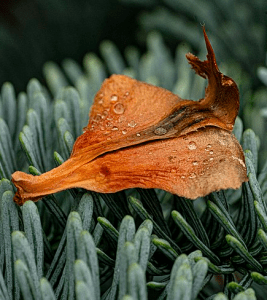
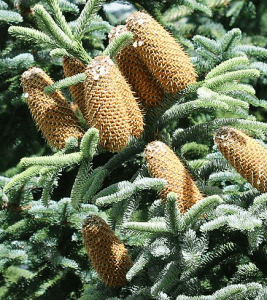
Bark
Noble Fir has pale grey to purplish, smooth bark.
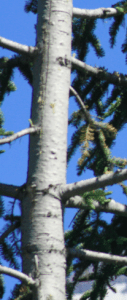
Habitat
A North American species, native to the Cascade Range and Pacific Coast Ranges of Western Washington and Oregon, as well as the extreme Northwest of California. Noble Fir is not only the tallest true Fir, but also prefers really high altitudes, typically growing at 300-1,500 m high. It is found planted on private estates in the UK, particularly in the West and North of Scotland.
Prefers cool humid areas.
Known Hazards
None
Could Be Confused With
Yew, (Taxus baccata), however, the needles of Yew are arranged quite differently, typically in two distinct rows. They are also much flatter and a different shade of green, lacking the silvery stripes.. The trunk of Yew is also very different, looking like bundles of trunks in mature trees. The most obvious difference is the lack of fragrance from crushed Yew needles. Noble Fir, on the other hand, is very fragrant, smelling similar to Yuzu.
Edible Uses
Noble Fir has been described as smelling very similar to Yuzu. It certainly has a distinctive citrusy scent. Although the flavour comes from the essential oils within the needles, after a month or so indoors, most of the oils will have evaporated so you’re best collecting outdoors only as you need it.
It’s best to think of the needles as a flavouring rather than a vegetable. You can blitz the needles in a herb or coffee grinder and add them to salt or sugar for use in baking or to flavour soups, meats, stews and casseroles. Use it like you would any other woody herb.
Young tips can be eaten straight from the tree in early spring, if you can reach them, added to salads, cures for meats and fish, tapenades or pestos.
It’s a flavour that works beautifully in desserts and syrups made from the needles are delicious drizzled over ice cream, in smoothies, on porridge, in cocktails or topped with ice cold sparkling water for a refreshing drink. Biscuits, cakes, chocolate are all enhanced by the citrus woodsy flavour of this Fir.
It also makes an interesting addition to primitive beer and naturally fermented lemonade mixes, but possibly the simplest way to enjoy Noble Fir is to make a tea with the needles, adding a little honey and a slice of citrus fruit, either Grapefruit, Lemon or Orange.
Notes on Herbal Uses
High in vitamin C, flavonoids and polyphenols, like many other Conifers, Noble Fir is widely used medicinally, particularly for coughs, headaches and poor circulation.
Take the needles as a tea for colds with a cough, the oil for headaches and drop pouches of fresh needles in to your bath to stimulate circulation and ease aching muscles.
Extra Notes From The Foragers
Noble Fir was introduced to the UK by David Douglas in 1830, along with the Douglas Fir.
In Denmark, Noble Fir is thought to be the most popular choice for Christmas trees and is widely used in Europe for wreaths.
Abies is derived from the Latin ‘rising one’, and refers to the height of Firs. It was usually used to describe tall trees or ships and procera also refers to the height of Nobel Fir, meaning ‘tall’. Noble Fir is the world’s tallest true Fir



